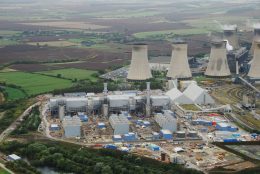
Power plants convert lumps of coal, drops of oil or invisible streams of gas into electric currents that can cook your tea water or charge your phone. But how do we produce electricity from gas?
In fact, if it were not for power plants, I could not be writing these words now and you could not read them. It is amazing. Yet amazement is often the last thing we feel when we think of huge, industrial power plants that produce our electricity and keep our homes, schools, hospitals and offices running. Maybe one day, we will be able to produce enough green and clean energy with non-conventional power plant that use wind, solar, geothermal energy or biomass, but until today we are reliant on conventional power plants.
“But at the moment we have to produce energy on demand. We have to produce as we use it because we cannot sufficiently store energy yet,” says Liz James, visitor centre co-ordinator of the West Burton B CCGT Power Station in Nottinghamshire.
She continues: “Renewable energy sources are dependent on certain whether conditions and are harder to regulate and not as efficient as conventional sources.”
The West Burton B CCGT Power Station near Gainsborough in Lincolnshire is a conventional power plant of the modern type operated by the French company EDF energy. Like most large power plants, the West Burton B CCGT Power Station is located in a sub-urban region, away from the city close to the river Trend.
It uses a combined-cycle of both a gas and a steam turbine together to produce electricity. By routing the waste heat from the gas turbine to the nearby steam turbine, which generates extra power, it can produce up to 50 percent more electricity from the same fuel than a traditional simple-cycle plant.
“Approximately 1,300 megawatts (MW) of electricity can be generated for use via the UK national transmission system, enough to meet the needs of 1.5 million homes (the equivalent of a city the size of Sheffield),” writes Tilly Spencer, the station manager, in the station’s Environmental Statement 2017.















